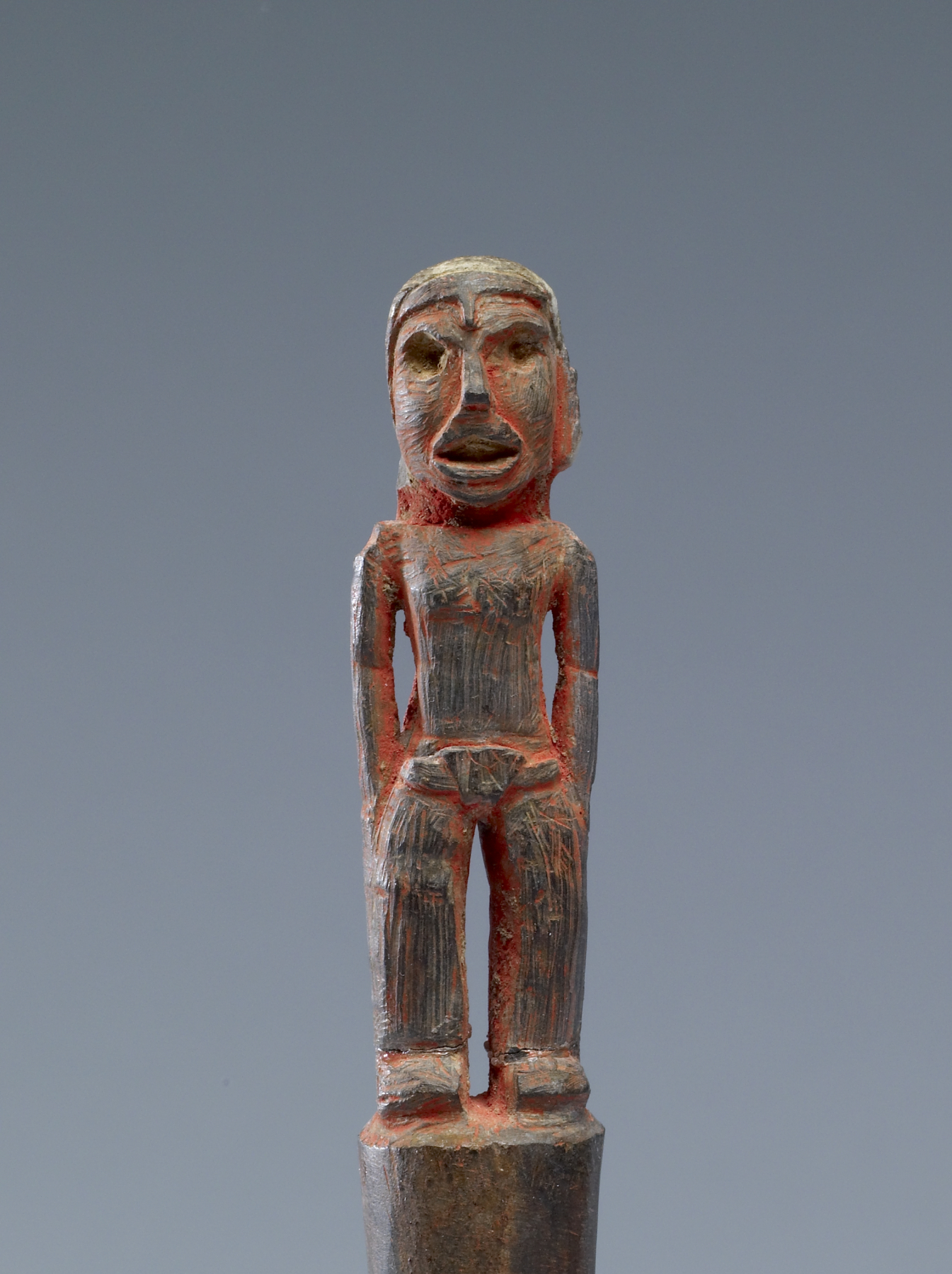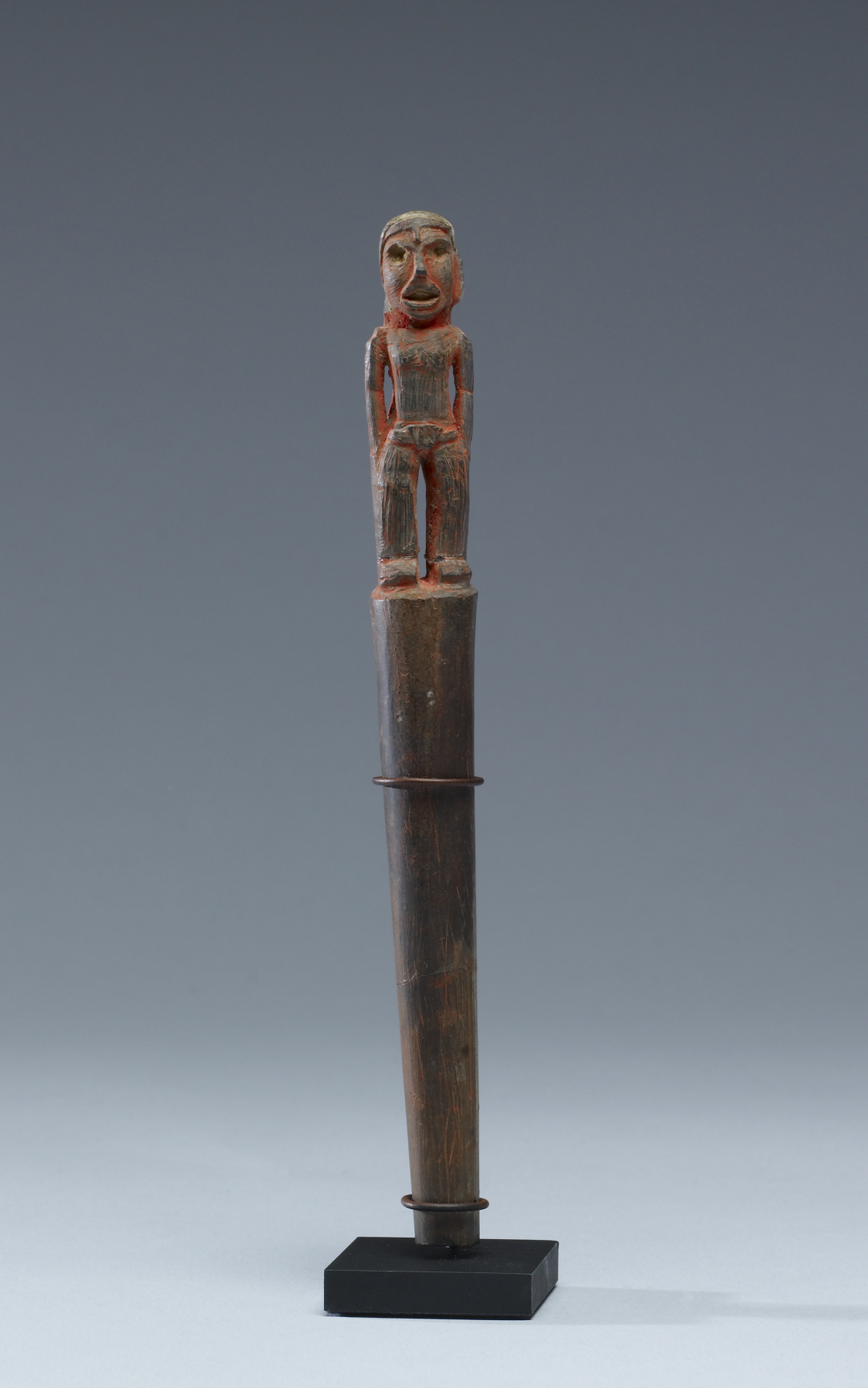Bloodletter with Standing Human Figure Handle
(Ancient Americas )
To attain hallucinatory or transcendent states, shamans and holy men challenge their bodies and minds, undertaking extreme feats of exercise, solitude, sleep deprivation, long fasting, and blood loss. Here, the handle of a bloodletter shows a man with wide, staring eyes, symbolizing the hypnotic state that he has entered. The figure is coated with red cinnabar pigment, a marker of the sacred in much of the ancient Americas.
Apart from bloodletting to induce trance, it was common in many cultures of early Mexico to offer blood to the gods as a frequent sacrifice. People pierced or cut themselves, and bled onto papers or textiles, which were then burned for the gods. Fleshy parts of the body, such as ears, tongue, and lips can be frequently pierced to produce blood without much damage. Commoners used cactus thorns to pierce themselves, but elites would have used a luxury item, like this greenstone bloodletter, to offer their sacrifice. (The tip of this bloodletter is a modern reconstruction.)
Inscription
Provenance
Provenance (from the French provenir, 'to come from/forth') is the chronology of the ownership, custody, or location of a historical object. Learn more about provenance at the Walters.
Andre Emmerich Gallery, New York [date and mode of acquisition unknown]; Merrin Gallery, New York [date and mode of acquisition unknown]; Private collection, March 1989 [mode of acquisition unknown]; Walters Art Museum, 2008, by gift.
Exhibitions
| 2018-2019 | Transformation: Art of the Ancient Americas. The Walters Art Museum, Baltimore. |
Conservation
| Date | Description | Narrative |
|---|---|---|
| 8/31/2018 | Examination | examined for exhibition; reconstructed |
| 8/31/2018 | Examination | The lower five inches of the blade has been restored. |
Geographies
Mexico (Place of Origin)
Measurements
H: 6 1/4 x W: 5/8 in. (15.9 x 1.6 cm)
Credit Line
Anonymous gift, 2008
Location in Museum
Not on view
Accession Number
In libraries, galleries, museums, and archives, an accession number is a unique identifier assigned to each object in the collection.
In libraries, galleries, museums, and archives, an accession number is a unique identifier assigned to each object in the collection.
29.7




